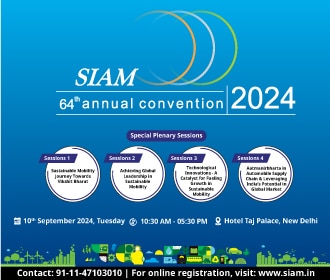In an industry talk with CV session, G.S. Ramesh, Chairman of the Layam Group shares with Ashish Bhatia on in every adversity lying an opportunity in the aftermath of the pandemic.

Q. How has the Layam Group evolved and how have you aligned to the present-day employment landscape?
A. When we looked at the employment landscape across the country, we found more than three and a half lakh candidates entering the market. They were not job-ready when seen through the conventional lens. They included dropouts (technical and or general). I started to focus on these candidates at a time no one bothered to create an opportunity for them. I created a business model for clients in the engineering industry, for instance. Allaying fears of unskilled labour impacting quality at that point and time, the company shortlisted these so-called unfit candidates and streamlined them to perform contract manpower. While giving back to society in my way, the industry also began to reap the benefits of this additional manpower that was erstwhile sidelined.
Q. A recent report from the CEDA estimates the job loss in the manufacturing sector alone at 31.7 per cent for FY2021. How do you see the landscape changing in the near to long term?
A. The manufacturing engineering industry is market-driven. Here a push and pull factor dictates the rise or fall in demand for human capital. It’s a factor in an economy where supply and demand play a crucial role in driving the job market. For instance, if the value chain at the top the demand drop is sensed, it gives rise to a chain of reactions and everyone is trapped in the vicious circle. The need of the hour is for the industry to create a more sustainable model. Today the industry is making do with retaining the critical manpower to keep the industry alive. The business models need to be built such that we don’t wipe out human capital from the system in a need-based scenario.
Q. Having looked at the industry from close quarters, how do you look at the cause and effect on the entire value chain including tier suppliers and the ancillaries?
A. It’s a top-down approach. It starts from the OEM level because they are takers. Any disruption impacts the bottom tier with a chain reaction. If the OEM cuts its requirement, there is bound to be a cascading effect down the value chain proportionately. The impact was bound to have been felt not only by the manufacturer but by the entire ecosystem. It impacted everyone. However, it was more panic that came through in the initial reactions, in hindsight. It was also about who handled it better. A panic reaction from the top hierarchy can never set a good example and will not instil confidence in the subordinates
Q. Are there enough jobs in the market today and do you believe where there is adversity there is an opportunity?
A. I am with you 200 per cent on every adversity presenting an opportunity. In continuation, I would want employers to convert the ‘headcount’ to ‘braincount’. I’ll give you an example. I picked up an ordinary 10th standard pass out, trained him and today he is managing a team of 300 diploma holder, engineers. The need is to go in-depth in human resource analytics to determine the extent of a candidate’s contribution.
Q. With this underlying opportunity, what are the skill sets most in demand for these re-entrants to the talent pool?
A. Emobility is a hot trend now. So naturally, there is immense scope for candidates with an electrical, electronics or mechatronics background. Also with manufacturers looking to set up a global Centre of Excellence (CoE), there is demand for candidates suited to the research and development exercises at such organisations.
Q. Is there a shift towards turning a gig economy?
A. It is all happening but again it appears to be very short-sighted. It is a short term gain and a long-term disaster business. You cannot create a resource with a need-based intention. If that’s the case, the output will be nowhere close to the desired 100 per cent. He or she will come to the office while starting to think about the next gig. If you really weigh the hygiene factor, which includes productivity, performance etc these will take a big hit. You are not writing a success story in my opinion, you are just running a show.




























